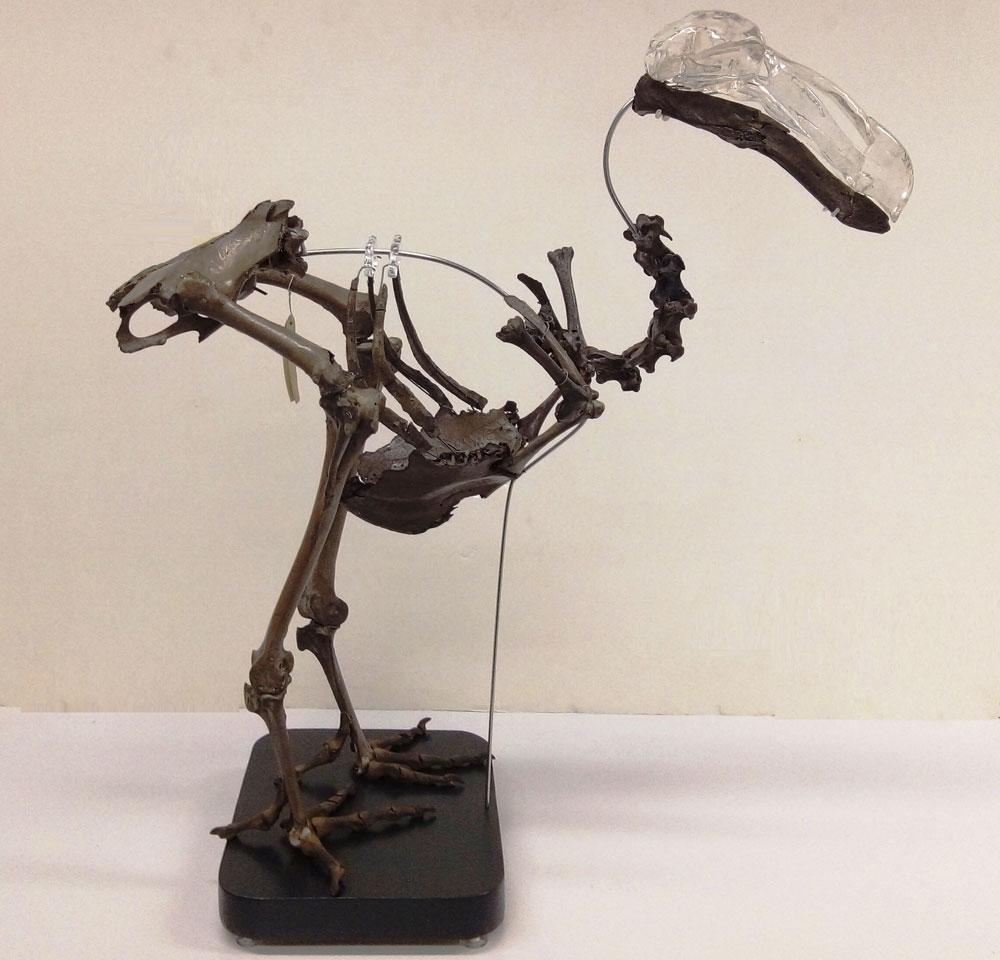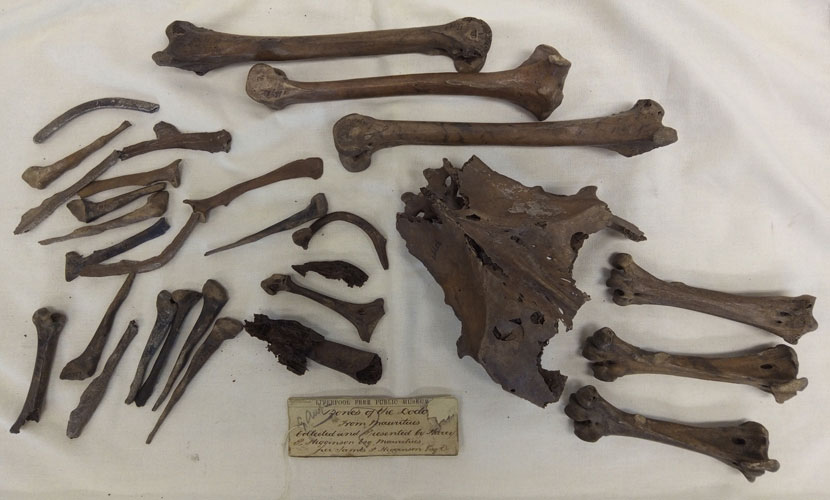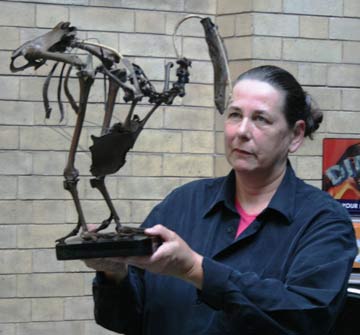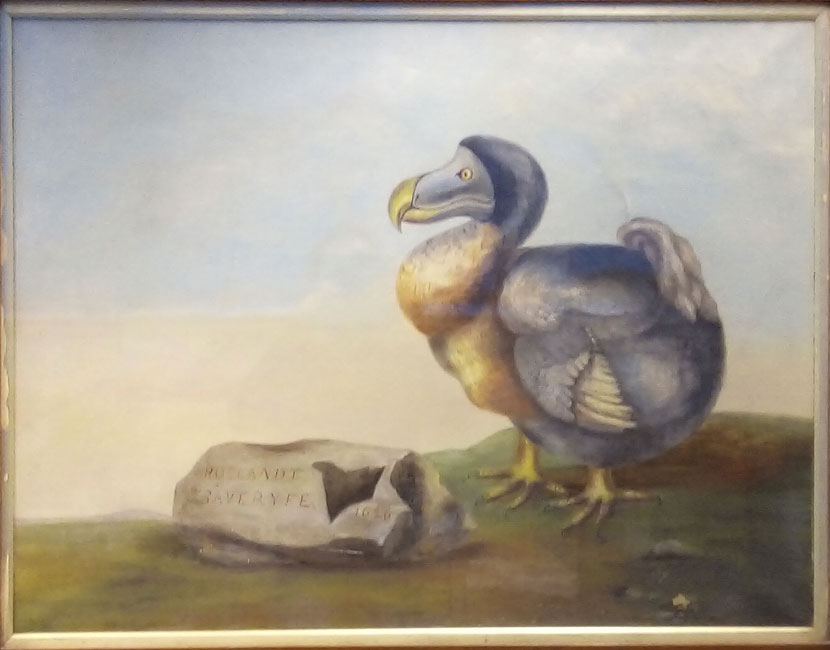Breathing new life into the Dodo

Did you know that World Museum has a Dodo? It’s understandable if you don’t as our Dodo is usually kept safely locked away in the Vertebrate Zoology store. The Dodo was last on public display ten years ago, and before that hadn’t been out in public for at least 40 years.
Dodos became extinct by the end of the 17th century and for more than 150 years were only known from two feet, a dried head and two skulls, preserved in museums. That was until 1865, when Harry Pasley Higginson discovered* some partially fossilised bones in a swamp in Mauritius. Harry recalled the events in his travelogue:
“Shortly before the completion of the railway I was walking along the embankment one morning, when I noticed some [locals] removing some peat soil from a small morass. They were separating and placing into heaps, a number of bones, of various sorts, among the debris. I stopped and examined them, as they appeared to belong to birds and reptiles, and we had always been on the lookout for bones of the then mythical Dodo. So I filled my pocket with the most promising ones for further examination…..
"A Mr Clarke, the Government schoolmaster at Mahebourg, had Professor Owen’s book on the Dodo so I took the bones to him for comparison with the book plates. The result showed that many of the bones undoubtedly belonged to the Dodo….. I sent a full box to the Liverpool, York, and Leeds museums from which, in the former, a complete skeleton was erected…..”
The bones sent by Harry arrived at Liverpool in February 1866 and were accessioned into the collection on 20 March. As Harry noted, a skeleton was assembled from some of the bones, but there are still two boxes of unassembled bones in the store too (logged under accession numbers 1984.1440 and 1984.1441). Besides the bones sent to the museum by Harry, the museum also received a smaller set of bones (logged under accession number 26.9.67.1-14) from Walmsley Stanley in 1867. Like Harry, Walmsley was an expatriate engineer working on the railway in Mauritius. Portions of Dodo skeleton purchased by the museum from bird collector Henry Baker Tristram in 1896 have sadly been lost.

A small selection of unassembled Dodo bones (1984.1441) sent to World Museum by Harry Pasley Higginson in 1866.
Our Dodo skeleton at World Museum, like almost all the Dodo skeletons in existence, is actually made up of bones from an unknown number of different Dodos. However, the quality of the skeleton was appreciated by ornithologist Edward Newton, who wrote to his brother Alfred in 1866:
“The Liverpool bones were I believe sent by a man of the name of Higginson. I believe they are a very good lot. As many as Clark sent and perhaps among them some that he has not got.”
It doesn’t appear the skeleton was changed much for 154 years, but some carved wooden feet were added, probably during the original assembly. Over time, the skeleton had grown fragile and was becoming dangerous to move. To preserve the skeleton for another 150 years, it has recently been strengthened with some new support wires. An acrylic replica cranium (the top part of the skull) has also been fabricated and added to the skeleton to better appreciate the Dodo’s large size. To celebrate the Dodo skeleton’s new lease of life we’ll be putting the Dodo on temporary display in World Museum atrium sometime soon.

The Dodo skeleton being held by Clem Fisher, Emeritus Senior Curator of Vertebrate Zoology in 2010, the first time it was on public display in at least 40 years.
Between the Dodo’s extinction and the discovery of bones in Mauritius, the Dodo took on a mythical status. All available accounts of the Dodo, including the artefacts in the museums were studied and gathered into a book by H. E. Strickland and A. G. Melville in 1848, seventeen years before Harry’s discovery. The book included a “fac-simile” of the Dodo from Roelandt Savery’s 1626 painting The Paradise (look carefully for the Dodo in the bottom right corner). In the Vertebrate Zoology office at World Museum there is a large painted copy of the Dodo picture from the book, inscribed with “E.M.P.K. 1900”.

Oil painting of the Dodo (1900) currently hanging in the Vertebrate Zoology office at World Museum. The painting is a copy of an 1848 facsimile of the Dodo in Roelandt Savery’s The Paradise (1626).
Savery’s paintings have since been shown to be inaccurate depictions of the Dodo. But these artistic impressions are still useful for us to imagine how the birds which provided bones for our skeleton might have looked. The Dodo remains one of the most famous extinct species, capturing the imagination of kids brought up with Alice’s Adventures in Wonderland through to those brought up with the Ice Age movies. Although the exact cause of the Dodos’ demise has been debated the bird is emblematic of human-caused extinction. The Dodo is a reminder that our actions, both individual and collective, can have profound consequences on the natural world.
*It is not absolutely certain whether Harry Pasley Higginson or George Clarke discovered the Dodo bones first. You can read more about the discovery in this academic paper: How Owen ‘stole’ the Dodo: academic rivalry and disputed rights to a newly-discovered subfossil deposit in nineteenth century Mauritius.
